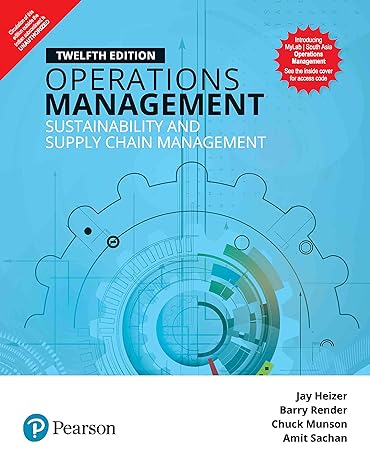Almost every patient in hospital is sent for laboratory investigation where sample collection is the foremost process.
Question:
Almost every patient in hospital is sent for laboratory investigation where sample collection is the foremost process. Based on laboratory test results, decisions about admissions, discharge and medication are taken. A study was planned to improve Sample Collection process in Nizam’s Institute of Medical Sciences, a tertiary care teaching hospital in Hyderabad, India. The study aims to define the process and various elements of Sample Collection process in the institute using Time-Motion study method and recommend improvements, thus improving patient satisfaction.
Volunteers were selected from the hospital management students and were trained to collect the data for the study. They were asked to follow the patient during sample collection process and note down each step in process and measure the process in time taken and distance travelled from the beginning till the end of the process. Descriptive statistics were used to summarize the data. Volunteers developed the flowchart time and distance by observing patients. The chart begins with patient entering sample collection room and ends with patient leaving sample collection room.
After the billing of the concerned laboratory investigation, the patient will be directed to a sample collection room for collection of sample. The chart begins with patient entering the sample collection room, where the patient walks 2 meters to sample registry counter for registry and coding. The patient has to wait for around 10 minutes in queue at the counter. Service time for coding and registry is around 2 minutes which is done manually by the clerk. Then the patient is directed to phlebotomist and patient needs to walk for 9 meters to reach phlebotomist. The waiting time here in queue is 15 minutes on an average. After the waiting time, the phlebotomist receives the patient. The phlebotomist labels the sample collecting tubes, collects required amount of blood into sample collection tubes and then hands over a bottle to collect urine sample to the patient. The service time for this operation is around 5 minutes. The patient is directed towards toilets for collection of urine sample. The patient had to walk for 21 meters to toilets where the delay in queue on an average is 3 minutes. After collecting urine sample which takes around 3 minutes, the patient walks back 21 meters to sample collection room to submit the bottle. Patient would require 5 seconds to place the bottle in urine sample collection tray and walks back to exit for 2 meters, where the chart ends.
The whole process of sample collection involves 4 operations, 5 transports, and 3 delays. Total distance travelled was 55 meters and the total time spent was 38 minutes 10 seconds (operation – 10 minutes 10 seconds and delays – 28 minutes). It can be inferred from the study that the patient had to spend more time in queues (28 minutes) than the actual service time rendered (10 minutes 10 seconds). The patient had to walk very long to toilets (42 meters to and fro) to collect urine sample which is not only unjust but also causing inconvenience to the patients. Time-Motion study is a helpful tool to identify various processes in hospital which can help in identifying and reducing unnecessary steps in these processes.
Discussion Questions
In your report to Ms. McFadden, you realize you will want to address several factors:
1. Comment on the procedure used to conduct the time and motion study.
2. What suggestion would you recommend to improve the patients’ waiting time and walking distance in the hospital?
Step by Step Answer:

Operations Management Sustainability And Supply Chain Management
ISBN: 234357
12th Edition
Authors: CHUCK MUNSON & AMIT SACHAN AND . JAY HEIZER , BARRY RENDER





